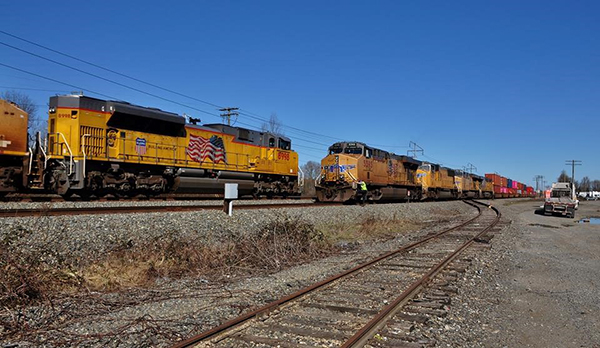
We begin the final month of the spring with a fairly busy week. Before too long the summer vacation and holiday season will begin; it’s easy for some employees to become a little preoccupied. Let’s make sure we all keep focused on the safety of our workplace! It’s been a busy week in the regulatory world, here’s all the latest:
OSHA
Significant news on the lockout/tagout front! The control of hazardous energy is regulated under OSHA’s control of hazardous energy (Lockout/ Tagout) standard. The standard’s purpose is to protect workers from the dangers of hazardous energy. The agency has published a request for information that seeks information regarding two areas where modernizing the Lockout/Tagout standard might better promote worker safety without additional burdens to employers: control circuit type devices and robotics. OSHA’s Lockout/Tagout standard currently requires that all sources of energy, including energy stored in the machine itself, be controlled during servicing and maintenance of machines and equipment using an energy-isolating device (EID). Control circuit type devices are specifically excluded from OSHA’s definition of an EID and are thus not a compliant method of controlling hazardous energy during service and maintenance activities. But technological advances since the standard was issued in 1989 suggest that, at least in some circumstances, control circuit type devices may be at least as safe as EIDs. OSHA requests information, data, and comments that would assist the agency in determining under what conditions control circuit type devices could safely be used for the control of hazardous energy. OSHA may also consider changes to the Lockout/ Tagout standard that address hazardous energy control for new robotics technologies. Employers are increasingly using robots and robotic components in their workplaces. OSHA would like to know more about what hazards and benefits this presents with respect to control of hazardous energy, safeguards that can be used, increased efficiencies that result, and any other information related to ensuring employee safety in interfacing with robots. See this important new RFI right here
The agency published revisions to a large number of standards across its spectrum of control in consonance with the current administrations goal of reducing regulatory burdens. The changes mainly impact recordkeeping requirements, as well as updating a variety of associated SAE standards that support various safety rules. See the revisions here
PHMSA
In big battery news, the agency is asking for nominations to its brand new Lithium Battery Advisory Committee. The committee will assist PHMSA in developing new or revised standards in reference to this very well-known hazardous material. If you’re even marginally connected to dangerous goods, you know the impact that these batteries have had on the industry, and PHMSA wants to bring SME’s in to help it move forward effectively with dealing with them. Manufacturers, importers, carriers, and others will be represented. If your team is interested in investigating participation in the effort, here’s your link to get started
EPA
The agency announced the availability of a signed action identifying chemical substances for inactive designation according to the Toxic Substances Control Act (TSCA) Inventory Notification (Active-Inactive) Requirements rule. This is a companion to the first version of the TSCA Chemical Substance Inventory with all listings designated as active or identified as inactive, posted on the EPA TSCA inventory in February of 2019. The action initiates a 90- day period after which substances identified as inactive will be designated as inactive. Inactive designations for chemical substances on the TSCA Chemical Substance Inventory are effective on Monday, August 5, 2019. See the action here
FMCSA
On July 6, 2018, FMCSA published a Federal Register notice announcing the details of the Commercial Driver Pilot Program that allows certain 18- to 20-year-olds with military training to operate CMVs in interstate commerce. This document requests comments on a possible second pilot program to allow non-military drivers aged 18, 19, and 20 to operate CMVs in interstate commerce. FMCSA requests comments on the training, qualifications, driving limitations, and vehicle safety systems that FMCSA should consider in developing options or approaches for a second pilot program for younger drivers. Comments must be received on or before July 15, 2019. See the notice right here
FRA
Under FRA’s accident/ incident reporting regulation, railroads are required to report to the agency all rail equipment accidents/incidents above the monetary reporting threshold (reporting threshold) applicable to that calendar year. FRA proposes to amend this regulation to modify the way it calculates periodic adjustments to the reporting threshold. See this amendment here
FRA is also updating the Nationwide Significant Risk Threshold (NSRT) for purposes of FRA’s regulation on the Use of Locomotive Horns at Public Highway-Rail Grade Crossings. This action is needed to ensure the public has the proper permissible risk threshold to evaluate risk resulting from prohibiting routine locomotive horn sounding at highway-rail grade crossings located in quiet zones. See the update here
Transport Canada
Our northern neighbor’s analog to PHMSA has published a new guidance page intended to assist users of the country’s rail network in understanding the body of new and revised security regulations implemented over recent history in the aftermath of the 2013 Lac Megantic accident. The new guidance page will give users a window into how the agency intends to enforce the security rules, as well as how it intends to move forward. See the new guidance page here
Labelmaster is a full-service provider of products, shipping and training software, and professional consulting services to assist the DG and HS&E professional to comply with national and international regulations. See our full line of solutions at www.labelmaster.com


